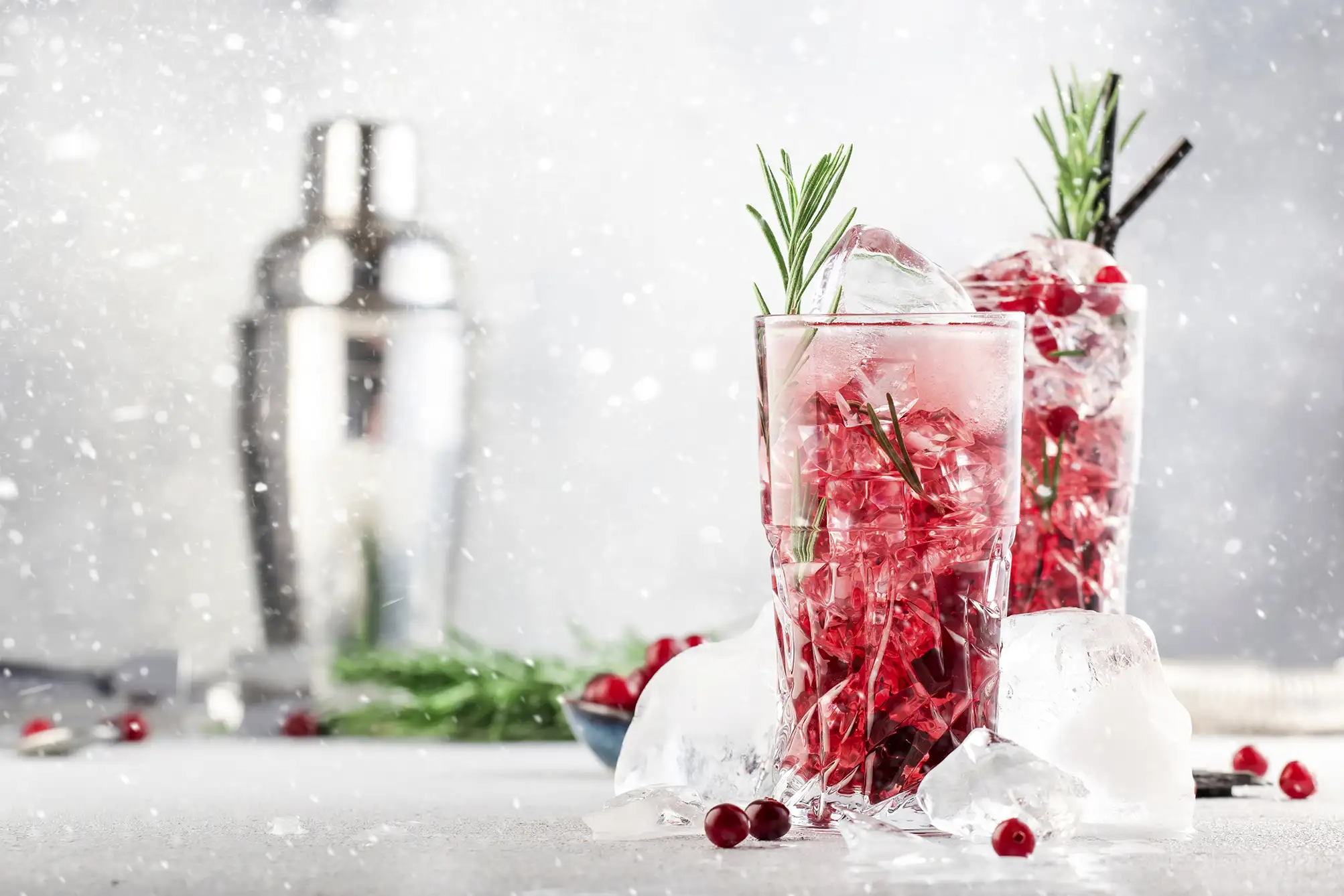
The winter season offers a unique opportunity for bars, restaurants, and hospitality establishments to refresh their cocktail menus and align with the season’s flavors and trends. Customers seek warmth, comfort, and indulgence as temperatures drop, making winter cocktails an essential part of your beverage offerings.
For bar owners and hospitality managers, crafting the perfect winter cocktail menu isn’t just about seasonal flavors—it’s a strategic opportunity to increase revenue, boost customer loyalty, and stand out in a competitive market. This guide will walk you through the critical steps of developing a winter cocktail menu that appeals to your clientele and maximizes profitability.
What We’ll Cover in This Piece:
Understanding Winter Cocktail Trends
Key Ingredients for Winter Cocktails
Balancing Flavors and Textures
Pricing and Profitability Considerations
Presentation and Aesthetic Appeal
Catering to Diverse Tastes and Dietary Preferences
Marketing Your Winter Cocktail Menu
Conclusion: Elevating Your Bar with a Thoughtful Winter Cocktail Menu
Understanding Winter Cocktail Trends
Winter is synonymous with rich, warm flavors that evoke a sense of coziness. When planning your winter cocktail menu, staying attuned to evolving trends is essential while keeping in mind the classics that customers love. Here’s what to consider:
Seasonal Ingredients
Winter cocktails often feature ingredients like spices, dark spirits, and rich flavors. Consider incorporating cinnamon, cloves, nutmeg, and star anise into your recipes. Customers will expect classic flavors like apple, pear, cranberry, and citrus, which can add a bright touch to otherwise warm drinks.
Hot Cocktails
Hot cocktails are another winter staple. Offering options like hot toddies, mulled wine, and Irish coffees can set your bar apart during the colder months. These drinks not only provide comfort but also cater to customers looking for something beyond the typical cold cocktail experience.
Festive and Holiday-Themed Cocktails
The holiday season brings an opportunity to create memorable, themed cocktails that align with Christmas, New Year’s, and other winter festivities. Limited-time holiday drinks often generate excitement, leading to increased sales.
Understanding these trends allows you to curate a menu that balances modern preferences with winter classics, ensuring your bar offers an appealing mix of beverages throughout the season.
Key Ingredients for Winter Cocktails
To create winter cocktails that resonate with your clientele, consider incorporating ingredients that complement the season:
- Dark Spirits: Whiskey, bourbon, rum, and brandy are winter favorites. Their rich, deep flavors provide a base for many winter cocktails.
- Liqueurs and Syrups: Amaretto, coffee liqueur, and chocolate liqueur are excellent choices for winter drinks. You can also create house-made syrups infused with seasonal flavors like cinnamon, clove, or honey.
- Winter Fruits: Pomegranate, pear, apple, and cranberry add a refreshing twist to rich winter cocktails.
- Herbs and Spices: Ingredients like rosemary, sage, thyme, and warming spices like ginger and cinnamon help define the seasonal flavor profile.
These ingredients enhance the richness and complexity of your winter cocktails, ensuring that each drink leaves a lasting impression on your guests.
Balancing Flavors and Textures

The balance of flavors is crucial in creating memorable winter cocktails. Winter cocktails should offer depth and complexity, unlike summer drinks, which often emphasize light, fruity flavors.
Sweet and Savory
Winter cocktails benefit from the contrast of sweet and savory elements. For example, pairing the sweetness of dark rum with the smoky, earthy flavor of spices can result in a complex and satisfying cocktail.
Bitterness and Warmth
Bitters are an excellent way to add layers of flavor to your winter cocktails. Consider using aromatic bitters or even more robust flavors, like chocolate or orange bitters, to enhance the richness of your drinks.
Texture Considerations
The texture of your cocktails is as important as the flavor profile. Cream-based drinks, like eggnog or Brandy Alexander, can be popular winter options. Ensure the texture complements the drink’s flavor and appeals to your customers’ desire for indulgence and comfort.
Pricing and Profitability Considerations
For bar owners and managers, profitability is always a primary consideration. With their premium ingredients and complex preparation methods, winter cocktails offer opportunities to boost sales—if priced correctly.
Ingredient Costs
Premium ingredients like dark spirits, spices, and winter fruits may increase your per-cocktail cost. However, customers are often willing to pay more for high-quality, seasonal drinks. Factor in these costs when determining pricing, and consider offering tiered options to accommodate different budgets.
Portion Control
Proper portion control is crucial since winter cocktails can be decadent and filling. Offering smaller sizes of indulgent drinks—such as hot buttered rum or a dessert-style cocktail—can help maintain profit margins while still providing an upscale experience.
Upselling Opportunities
Winter cocktails also present upselling opportunities. You can offer pairings with small bites or desserts that complement the cocktail’s flavor profile, adding value for customers and increasing ticket size.
Presentation and Aesthetic Appeal

Winter cocktails not only need to taste great, but they should also look the part. A well-presented drink enhances the customer’s experience and encourages social media sharing, which can lead to free word-of-mouth marketing for your establishment.
Seasonal Glassware and Garnishes
Use festive glassware, such as mugs for hot cocktails or vintage glasses for classic drinks, to enhance the experience. Garnishing your winter cocktails with seasonal touches like cinnamon sticks, star anise, or cranberries can elevate the visual appeal and add a sensory element.
Visual Storytelling
Creating an inviting, seasonal atmosphere in your bar—through decor, music, and lighting—will complement the winter cocktails on your menu. When customers feel immersed in the experience, they’re more likely to share it with friends and return for another visit.
Catering to Diverse Tastes and Dietary Preferences
To ensure your winter cocktail menu appeals to a broad audience, consider offering options for customers with specific dietary needs or preferences.
Non-Alcoholic Winter Cocktails
Non-alcoholic options, often called “mocktails,” are becoming increasingly popular. Offer a few creative, flavorful non-alcoholic winter cocktails to cater to customers who prefer not to drink alcohol. Using seasonal ingredients, you can craft satisfying and indulgent drinks that provide a full cocktail experience without the alcohol.
Vegan and Gluten-Free Options
Ensure some of your winter cocktails cater to dietary restrictions like vegan or gluten-free preferences. For example, you can use almond milk instead of cream for a vegan eggnog or gluten-free spirits to accommodate more customers. These inclusive options can expand your customer base and encourage repeat visits.
Marketing Your Winter Cocktail Menu
Creating a well-thought-out winter cocktail menu is just the first step. The next challenge is marketing it effectively to drive sales. Here are some strategies tailored for bar owners and managers:
Seasonal Promotions and Events
Host winter-themed events, such as holiday parties or seasonal cocktail tastings, to generate buzz. Offer limited-time specials and themed promotions to encourage customers to try your winter cocktails.
Social Media Engagement
Use social media platforms like Instagram to showcase your winter cocktails visually. Invest in high-quality photography and appealing captions to highlight the uniqueness of your drinks.
Email Marketing and Loyalty Programs
Leverage email marketing to promote your winter cocktail menu. Offer exclusive discounts to your loyalty program members or subscribers, and include behind-the-scenes stories about your new creations to engage customers.
Conclusion: Elevating Your Bar with a Thoughtful Winter Cocktail Menu
Crafting a winter cocktail menu provides a prime opportunity for bar owners and hospitality managers to capitalize on the season’s demand for comforting and festive drinks. By thoughtfully selecting ingredients, balancing flavors, and carefully pricing your offerings, you can create a menu that not only appeals to customers but also boosts profitability.
Don’t forget that presentation, atmosphere, and marketing are crucial to ensuring the success of your winter cocktail menu. With the right approach, your bar can become a go-to destination during the winter months, offering patrons an experience that keeps them coming back throughout the season.
Other Content You May Enjoy
To succeed and grow your restaurant, bar, or brewery you need to stand out in local search results. Whether someone is searching for the “best craft beer near me” or “top-rated seafood restaurant in [your city],” Local SEO (Search Engine Optimization) helps your business appear at the top of those search results.
With 81% of consumers using Google Search and Maps to find local businesses, and nearly 90% of customers choosing a business on the first page of search results, optimizing your online presence is essential.
This guide will walk you through Local SEO strategies tailored for restaurants, bars, and breweries, covering Google My Business, website optimization, online reviews, local backlinks, and more.
By the end of this guide, you’ll have a step-by-step action plan to increase your search rankings, attract more local customers, and grow your business.
In today’s digital world, having a well-designed, functional website is essential for restaurants, bars, and breweries. It goes beyond having social media. A great website can help attract new customers, showcase menus, accept reservations, and even drive online sales. But one of the most common questions business owners ask is: How much should a website cost in 2025?
The answer depends on several factors, including the type of website, features, complexity, and whether you choose a DIY solution or hire a professional web developer. Costs can range from a few hundred dollars for a basic website to tens of thousands for a fully customized, feature-rich platform.
This guide will break down website costs for restaurants, bars, and breweries, helping you understand the pricing landscape and choose the best solution for your business
Trivia nights have become an incredible marketing strategy for bars, restaurants, and breweries to draw in crowds and engage with new customers. With the recent collaboration between Geeks Who Drink, Timeplay, and the iconic television show Jeopardy!, businesses now have an exciting opportunity to host the Jeopardy! Bar League. This partnership combines the global brand recognition of Jeopardy! with Timeplay’s cutting-edge technology and the fun of live trivia from the experts at Geeks Who Drink.
In this piece we’ll cover what this new collaboration between these two trivia powerhouses is and how you can bring this unique experience to your venue.
In today’s world, both websites and social media platforms are crucial for a brewery, bar, or restaurant’s online presence. However, consumer habits show distinct preferences for each, depending on the context of their search or interaction.
In this guide, we’ll go over the basics, walk you through how to leverage these tools effectively, and show you how understanding these trends can help your venue better meet your customers’ expectations.
As a restaurant, bar, brewery, or any venue with a food and beverage program, having a modern, functional, and aesthetically pleasing website isn’t just a luxury—it’s a necessity.
No matter the size of your business, your new potential customers often interact with your website first—and first impressions matter.
In this piece, we’ll explore the top website trends shaping the online presence of hospitality businesses in 2025. These trends will help your venue stand out and attract more customers while creating a unique and modern experience to establish the perfect guest experience from start to finish.
For bar owners, hospitality managers, and small business owners, selecting the right gin brands is more than just filling the shelves—it’s about curating a distinctive customer experience. Gin has soared in popularity, becoming a staple of modern cocktail culture. With its complex botanical infusions, gin offers versatile, memorable flavors that can attract a wide range of customers. But with so many choices available, which brands should you prioritize to bring out the best in your gin menu?
This guide explores the seven best gin brands that have proven themselves through quality, craftsmanship, and unique flavor profiles. By understanding what makes each brand special, you and your staff will be better equipped to create a standout gin selection that delights your patrons, reinforces your brand’s reputation with a robust gin drinks menu, and helps you continue crafting classic and innovative gin cocktails.
